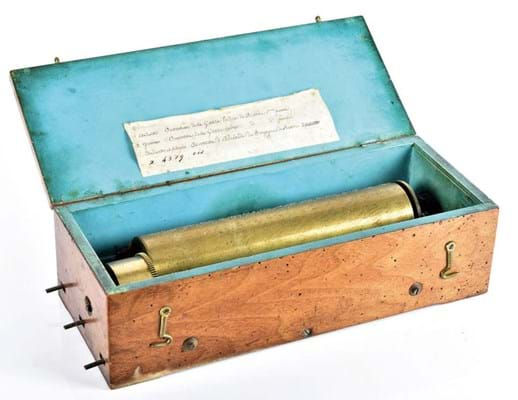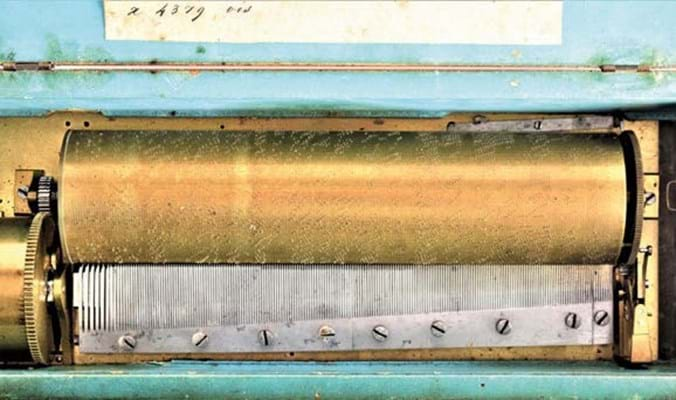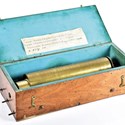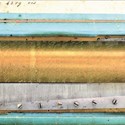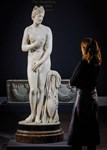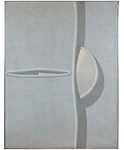It was thus remarkable that two were offered for sale at Special Auction Services of Newbury on November 30, both from the collection of the late Graham Webb (1930-2005), the first specialist dealer in mechanical music in the UK.
Although often unprepossessing on the outside, the musical boxes of Nicole (only a very distant relative of better-known Nicole Frères) are celebrated for their early date, build quality and technical sophistication. His invention of the damper allowed bass notes to be played without extraneous noise.
‘Rigid notation’
Both these boxes date from c.1822-25 and share the so-called ‘rigid notation’ or squared grid engraved to the cylinder. Quite why Nicole marked his cylinders in this way is unknown but as he seems to have been the only maker to use this marking it is something of a hallmark.
Marginally the better of the two was the overture box in a plain fruitwood case measuring 14in (35cm) wide overall containing a 10in (25cm) cylinder with a two-part comb of 203 teeth. Carrying the serial number 4397, it is among the earliest overture musical boxes and played the overture to Gazza Ladra in two revolutions and Andante & Allegro from Adelaide di Borgogna. It was modern music at the time: Rossini premiered both operas in 1817 (May and December respectively). The musical box was described as being ‘in very good playing condition’.
The last equivalent box offered at auction in the UK had surfaced at Cirencester auction house Moore Allen & Innocent in 2008 when it sold for a surprise £54,000. This Webb box was not far behind: it was estimated at £10,000-15,000 but sold at £52,000.
Estimated at £8000-12,000 and hammered at £36,000 was a box of similar date that played three airs on a 9in (22cm) cylinder and comb forged in four pieces: two main sections (both signed F Nicole) plus extra elements of 17 treble teeth and four bass teeth. The lid to the box was probably an early replacement and while it played well, the sound was soft and the motor at times reluctant to start.
Christopher Proudfoot, mechanical music specialist at SAS, said: “I bought my first horn gramophone from Graham Webb in 1965 and it was wonderful to be able to close the loop, so to speak, by selling his remaining musical boxes.
“The price of the two ‘Rigid notation’ boxes was not unprecedented, but we hadn’t dared expect it.”


